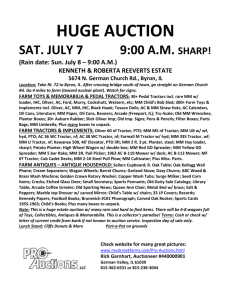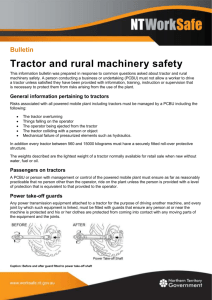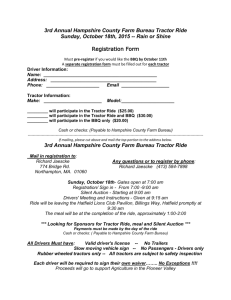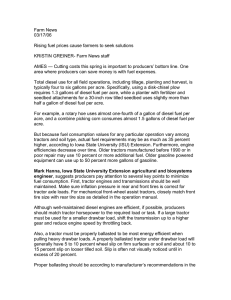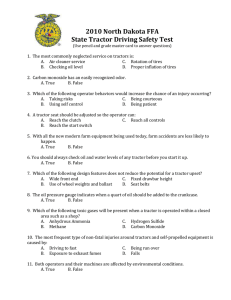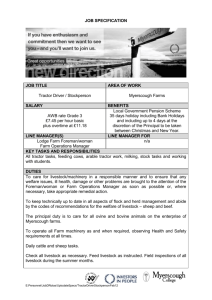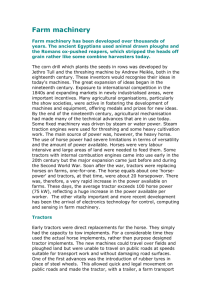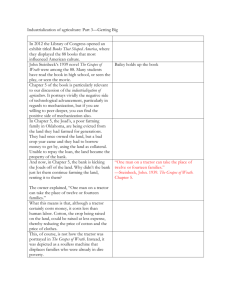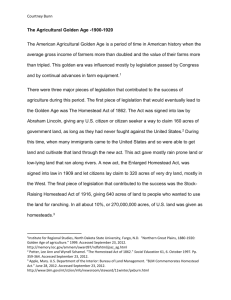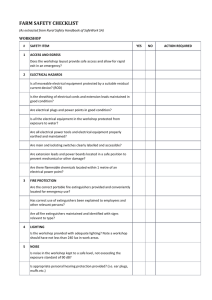claim management of tractors
advertisement
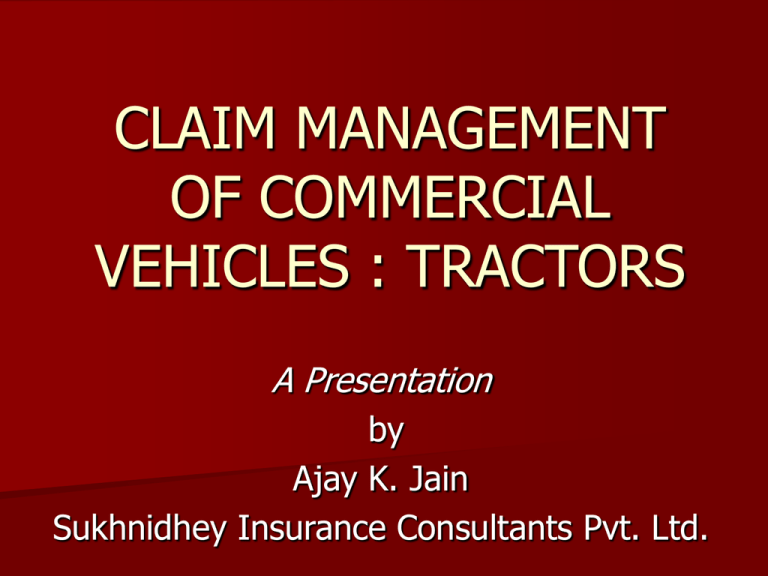
CLAIM MANAGEMENT OF COMMERCIAL VEHICLES : TRACTORS A Presentation by Ajay K. Jain Sukhnidhey Insurance Consultants Pvt. Ltd. WHAT IS A TRACTOR ? A vehicle having a powerful gasoline or diesel motor and usually large, heavily treaded rear tyres, used especially for pulling farm implements or machinery. A truck having a cab and no body, used for pulling large vehicles such as vans or trailers. Something that pulls or draws. TYPES OF TRACTORS Four-wheel Row-crop or high-wheel Tricycle Crawler The acreage to be worked, type of crops grown, and the terrain all impose their requirements on tractor design. Accordingly, models vary in such details as power generated, weight, ground clearance, turning radius, and facilities for operating equipment. MAJOR PARTS OF A TRACTOR FRONT AXLE AND SUSPENSION COOLING SYSTEM STEERING ASSEMBLY BRAKE SYSTEM ENGINE CLUTCH TRANSMISSION DIFFERENTIAL AND REAR AXLE CABIN OR STRUCTURE RATING OF TRACTORS Tractors are rated by the horsepower they deliver at the drawbar and at the belt. On small models, the drawbar and belt horsepower may run as low as 10 (7.5 kW) On large models the drawbar horsepower runs as high as 132 (98 kW), while belt horsepower reaches about 144 (107 kW). INDUSTRIAL V/S FARM TRACTORS The basic design of an industrial tractor for hauling and for operating construction equipment departs little from that of a farm tractor, and differences in design of models fit the vehicle to its intended work. As high ground clearance is not needed for industrial work, the tractor is commonly built with a lower centre of gravity and is capable of travelling a few miles per hour faster than a farm tractor. If its use is confined to hauling, it may not be equipped with hydraulic power. If it is to be used for operating a scraper, backhoe, or front-end loader, its structure may be heavier and more rugged. OPERATION Modern farm tractors usually have four or five footpedals for the operator on the floor of the tractor. The pedal on the left is the clutch. Two of the pedals on the right are the brakes. The pedal furthest to the right is the foot throttle. Some tractors, especially those designed for row-crop work, have a 'de-accelerator' pedal. A fifth pedal is traditionally included just in front of the driver's seat to operate the rear diff-lock. SAFETY No other farm machine is so identified with the hazards of production agriculture as the tractor. Tractor-related injuries account for approximately 32% of the fatalities and 6% of the non-fatal injuries in agriculture. Over 50% is attributed to tractor overturns. The roll over protection structure (ROPS) and seat belt, when worn, are the two most important safety devices to protect operators from death during tractor overturns. Modern tractors have rollover protection systems (ROPS) to prevent an operator from being crushed if the tractor overturns. In open-air tractors the ROPS is a steel beam that extends above the operator's seat. IMPORTANT POINTS Always give importance to the “aggregate numbers” Always consider the “Line of impact”. Always give more importance to spot survey to minimize the liability Always consider these points at the time of the final survey Repairing v/s Replacement For Driving license Parts which should not be allowed as per IMT 21 endorsement When the Claim is not payable For minimizing liability Impact of attached trolley on claim status THANK YOU HAVE A NICE DAY For any queries please contact: Ajay K. Jain 098280-11115, 098291-11115 er_akj@yahoo.co.uk Website: www.sukhnidhey.com

